I had a hard time deciding which fall books to review, because there have been so many terrific ones published of late that it’s been hard to choose among them. But here’s a half dozen fabulous reads, three novels and three memoirs, that will make you forget it’s turning cold out there because you’ll be cozily at home avidly turning pages.
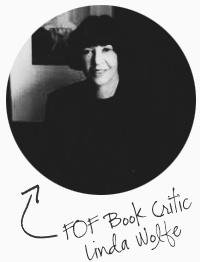
FOF award-winning author, Linda Wolfe, recently published her powerful book, My Daughter, Myself: An Unexpected Journey, in June. She has published eleven books and has contributed to numerous publications including New York Magazine, The New York Times, and served the board of the National Book Critics Circle for many years. Her latest reviews capture everything from 1960s Kabul to present-day hostages in Somalia.
Win one of these fall reads! To enter, comment below by answering the question: Which of Linda’s picks do you want to read?
First, the novels:
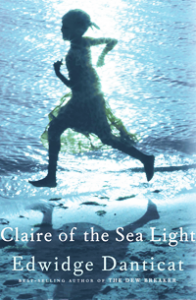
Claire of The Sea Lightby Edwige Danticat
Knopf. 238 pp.
I was blown away by award-winning novelist and memoirist Edwidge Danticat’s latest book, Claire of the Sea Light. It takes a writer—but only a supremely gifted writer—to give you a village, and that’s what Danticat has done here, given us the story of an entire Haitian village, told through the linked experiences of a fascinating a group of characters. There’s the girl of the title, Claire, a perceptive seven-year-old whose mother died giving birth to her and whose impoverished fisherman father, Nozias, hoping to ensure the child a better life than he can provide, wants to give her away to a wealthy townswoman. There’s the woman, Gaelle, whose own daughter has died and whose beloved husband has been the victim of a bystander shooting. There’s the owner of a private school whose son has failed to live up to his youthful promise, a hardworking restaurateur whose son has grown up to be an enterprising radio journalist, some corrupt policemen, careless gang members and a young housemaid raped and impregnated by a member of her employer’s family. The lives of all these people, and more, come together over time to provide a stunning portrait of Haitian life, one we never get from news stories about the island. Equally stunning is the technique with which Danticat handles the progression of time and the secrets that lie in time past, there for the taking if only we could make time run backward.
Danticat uses words sparingly, and to great effect. Here she is describing Haitian wives who prefer to live in antiseptic Miami but occasionally return to visit husbands stuck in Haiti by their businesses: “the so-called expatriate wives came back each time fatter and reeking of citronella, every mosquito and salad and untreated glass of water suddenly their mortal enemy.” Here she is, seeing Haitian youth through the eyes of the schoolmaster. “There was something tragic about a generation whose hopes had been raised, then dashed over and over again… Their leaders and elders—including himself—had made them so many promises that they’d been, for whatever reason, unable to keep.”
This small book—it’s only 238 pages long—more than holds it own against this season’s enormous doorstopper books. It’s tiny, but as exquisite as a gem.
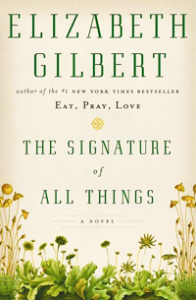
The Signature of All Thingsby Elizabeth Gilbert
Viking. 501 pp.
You’re in for another treat with this one. I’m sure you know about it already, given that it’s garnered attention everywhere. But I wanted to put my own two cents in. I approached this book skeptically. How could the author of the fun but essentially lightweight memoir Eat Pray Love write a novel that would be any good? At least for a literary heavyweight like me? So now, I’m ready to eat my hat! What I’d forgotten was that Gilbert had been a novelist long before she turned to memoir and had published two novels before Eat Pray, and what I realized as soon as I started reading The Signature of All Things was that this new book was as artful as any new novel out there, was indeed so well-wrought and compelling I couldn’t stop reading it. So if you haven’t already decided to read this book, let me add my voice to all the others saying you should.

The book has an almost Dickensian feel to it at its start, for it begins with the story of Henry Whittaker, the poor and brutalized son of a down-and-out gardener, who is taken under the wing of England’s great late 18th century botanist, Sir Joshua Banks. Banks gives Henry his first job, sending him to sea on Captain Cook’s third venture to the South Pacific and asking him to obtain some botanical specimens for him. Here, Gilbert helps herself to great chunks of material from Cook’s journals about the voyage, making us see afresh the wondrous and dangerous adventures of the captain and his crew through the eyes of young Whittaker.
To make this part of a long story short, Whittaker, grown wily, has a falling out with Banks, sells his specimens to the Dutch East India Trading Company, becomes hugely rich, marries a Dutch woman—“Henry perceived her as a living slab of ballast, which was precisely what he desired”—moves to America, becomes even richer and has a single child, a daughter, Alma.
Alma is the immensely likable heroine of the book, which now leaves Dickens behind and takes a 21st century feminist turn. Men don’t find Alma attractive. She’s too ungainly, too tall, and too smart, a scholar of Latin and Greek, able to hold her own among the guests at Henry’s dinner table “the most tedious and deaf old professors—perfect mausoleums of men.” So although she is an heiress, no young man courts her, and instead of being occupied with clothes and hairstyles and home furnishings like other young women of the age, she instead becomes a serious botanist, focusing on the study of mosses. She becomes adept at masturbating for sexual relief, but is loveless until she is 48 years old, when at last she meets a soulmate. But let me not spoil the rest of the book for you. Suffice it to say that Alma proceeds from being tied to her home to traveling the world and, despite being a female, becomes the greatest botanist of the 19th century, making discoveries that resemble those of Charles Darwin.
Was there have been a woman like Alma in the 19th century? Could there have been? Not likely. But Gilbert makes her heroine’s life remarkable accomplishments seem plausible enough.
You’ll learn a lot about plants from this book. But you’ll also learn a great deal about love, sex, Tahiti, American history, and more. Gilbert has given us an enchanting, meticulously researched, thoroughly readable and altogether delicious novel.
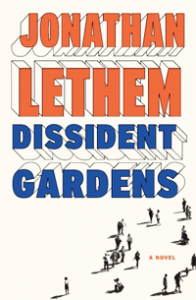
Dissident Gardensby Jonathan Lethem
Doubleday. 384 pp.
Lethem’s energetic new novel, although suffering in places from logorrhea, is a powerful and memorable work. I don’t know about you, but I’ve known women like his central character, Rose Anguish Zimmer, an in-your-face, opinionated, fierce ex-Communist; known denizens of her lifelong habitat, Sunnyside Gardens in Queens, New York; have friends like her daughter Miriam, raised on the music of Josh White, Pete Seeger, and Woody Guthrie, seduced by the lure of the Sandinistas in Nicaragua. And I can only say Hats Off to Lethem for the tremendous feat of catching these people on paper. They, and many of the other characters in the book, are altogether vibrant, real and unforgettable.
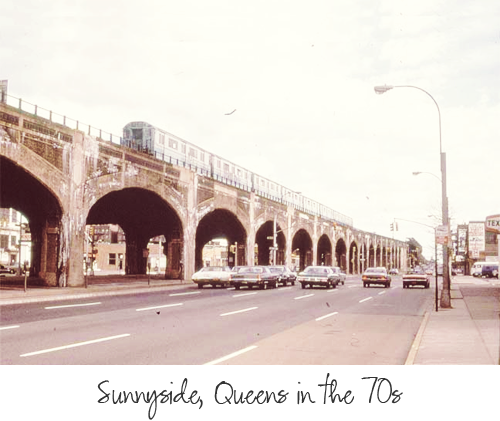
The writing is often as good as writing gets. Here’s Rose, for example: “Sometimes she marveled over herself as she’d always heard herself marveled over. Oy! Where does the third Anguish sister get this fershlugginer mouth on her? From where does this girl find the material with which she berates her family? Can she be stopped? She couldn’t be stopped… History had commanded she exist.”
Here’s Rose having a knockout dragdown fight with teenage Miriam after catching her having sex in their apartment: “She tackled Miriam to the floor. For one instant Miriam found herself swept into her mother’s incoherent embrace, arms of iron, bosom of cloying depths corkscrewed face corroding her own with its bleachy tears. Then, as if she was and had always been only a child, her body to be handled, limbs, to be shoved through sleeves… Rose shoved Miriam’s head into the oven.”
There are glorious set pieces in the novel: Rose and her husband Albert visiting a collective farm in New Jersey. Miriam competing on an NBC quiz show. Miriam’s folksinger husband desperate and depressed in Manhattan’s Chelsea Hotel. Rose’s protégé, the child of her black policeman lover, in a Manhattan ballroom, accepting an award from a black policemen’s association. Miriam fighting for her life among the Sandinistas in Nicaragua.
But there’s also plenty of excessive verbiage. Lethem tends to let his words keep coming out, no matter if they advance his story or not. I think, in fact, that he’s not much interested in story. He’s interested in using words. And at times he uses far too many. Indeed, his writing made me think of a letter Virginia Woolf once wrote to a friend, a missive in which she compared writing to a mundane bodily function, deeming it “an endlessly pleasurable source of anal gratification.”
And now for the memoirs:
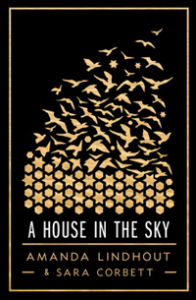
A House In The Skyby Amanda Lindhout and Sara Corbett
Scribner. 373 pp.
The book that stands out for me as the must-read title among this fall’s numerous offerings is A House In The Sky by Amanda Lindhout and Sara Corbett. Lindhout, you may remember from news reports, is a young Canadian woman who was captured by Somali kidnappers in 2008 and held prisoner by them in the most appalling conditions for almost a year and a half. Corbett, a contributing writer to the New York Times Magazine and other major periodicals has written Lindhout’s harrowing story in beautiful measured prose that brings to life the kind of story we are able to read relatively dispassionately in headlines, or watch with half our minds on something else on TV. After reading A House in the Sky, you won’t feel dispassionate about international terrorism, won’t view it as something remote and distant. This mesmerizing book will make it seem upfront and absolutely personal.
When Lindhout was nine years old, her father abandoned his family, leaving her and a younger brother to be brought up by their suddenly poverty-stricken mother, a Hippie with an unfortunate penchant for hooking up with abusive men. At ten, trying to sleep while listening to the sounds of her mother being beaten by one of her boyfriends, Lindhout taught herself how to escape from the misery of her surroundings by using her imagination. She would picture in her mind’s eye the beautiful scenes she loved to look at in the used National Geographic magazines she used to buy for herself from the proceeds of dumpster diving. Her imagination taught her a way to escape, if just in her head, from her shabby and unhappy home, and the magazines awakened in her a desire to be in distant, exciting places.

Her first ventures were to South America with a boyfriend. Later on, financing her trips with intermittent bartending jobs back home in Canada, she traveled to Southeast Asia, India, Africa and the Middle East, where she decided to try her hand at being a freelance journalist. She took some courses in photojournalism and, knowing that for novices there was work to be had covering stories in dangerous places where more seasoned reporters were wary about going to, she managed to secure a few assignments in some of the world’s hotspots, including Ethiopia, Pakistan, and Baghdad. Then, in the summer of 2008 she got an assignment in the most dangerous place of all, Somalia, enlisting to accompany her an old boyfriend, Nigel Brennan, a photojournalist from Australia.
Somalia proved her undoing. She was barely there a few days when she and Brennan were kidnapped by a gang of Somali bandits. The two were held hostage in one safe house after another while the bandits, convinced that all Westerners are rich, attempted to get a million and a half dollars in ransom money from their families—neither of which had anything like that kind of money. Lindhout and Brennan languished while their parents, with the help of a professional negotiator, tried to get their captors to lower the ransom amount. The kidnappers refused, and the months of captivity dragged on. The pair were humiliated, starved, beaten, and, after an attempted escape, chained to their beds in order to make them so weak they couldn’t run away again. Lindhout, who had converted to Islam in the hopes this would make her tormentors less likely to hurt her, was, despite her conversion, gang-raped. Corbett reports the rape with restraint. There are no hysterics in this book. Lindhout “bled for days afterward,” is all she tells us about the experience. It is a simple sentence, so artful that it carries more weight than pages full of words could.
Despite the rape and the rest of her torments, Lindhout remained hopeful and kept her spirits up by imagining for herself a home in the sky, furnishing the rooms, escaping to it whenever she could. But finally, after months and months of not getting paid for their catch, her kidnappers grew desperate and resorted to torture. This nearly destroyed Lindhout. “A blackness edged over me,” she says. “I understood then what it means to feel hopeless. To despair. To feel no trace of faith in anything.” But it also sped up the negotiations, and soon after the torture episode, the kidnappers accepted a lower amount of ransom, and Lindhout and Brennan were freed.
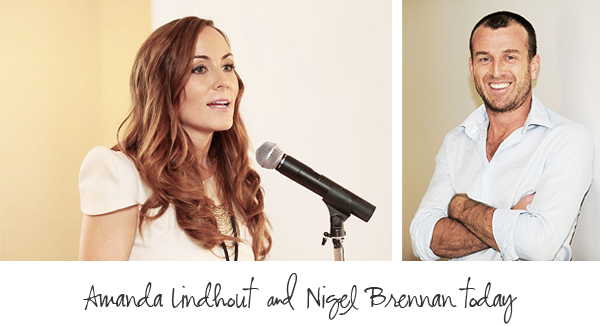
Today, after months of rehabilitation and therapy back home in Canada, she has chosen to forgive her kidnappers. “I understand that those boys and even the leaders of the group were products of their environment—a violent, seemingly unending war that has orphaned thousands of children and reaches back over twenty years now.” She has also learned to forgiven herself for the pain her decision to go to Somalia caused her parents, and has founded an NGO called the Global Enrichment Foundation that helps Somali women living as refugees in Kenya, providing them with food, education, and job training skills.
Lindhout is a woman of extraordinary courage and spirit. And this is an extraordinary book, one that is absorbing, triumphant and inspiring. I found it unputdownable.
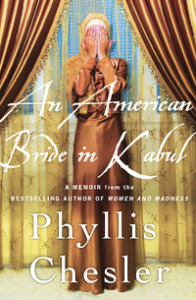
An American Bride In Kabulby Phyllis Chesler
Palgrave/Macmillan. 228 pp.
Feminist historian and social activist Phyllis Chesler endured a different kind of captivity. Back in 1959 when she was a college student, she made a foolish error of judgment—didn’t we all, back when we were college students? I certainly did. But none of my mistakes had quite as serious a consequence as Chesler’s did. The product of a lower middle class Orthodox Jewish family, she fell in love with a wealthy fellow student, an Afghani Muslim named Abdul-Kareem, and agreed, at his urging, to marry him. Despite the difference in their backgrounds, Chesler, in her naivete, considered the match to be a perfect one. Abdul-Kareem was handsome, charming, and interested in all the same things she was: the masterful films newly coming out of France and Italy, the literary works of the world’s greatest authors, a future in which they would both pursue cultural and creative careers and—as tempting to Chesler, as it would be to Amanda Lindhout fifty years later—seeing the world. “I would travel to Europe,” Chesler tells us. “The Middle East, North Africa, Central Asia, India, and the Far East. We would live in Kabul for a while, then move on to Paris, and then back to New York so I could finish college.”
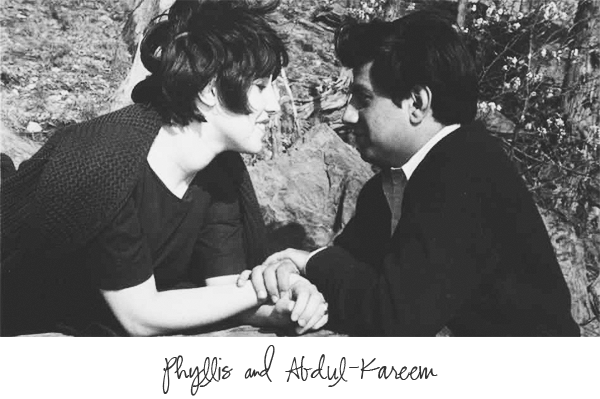
The naïve young woman didn’t know that Abdul-Kareem had no intention of returning to New York once he had captured a bride. Soon after their runaway wedding, the couple left for Europe and a visit to the groom’s family in Kabul. But in the Kabul airport, her American passport was confiscated, and in Abdul-Kareem’s home, which was ruled by her father-in-law, and his several wives, Chesler was expected to live like any Afghan bride, in purdah, in a harem—call it what you will, it meant living in complete isolation from the world of men. She could not leave the house. “An Afghan woman who walks or shops alone,” she discovered, “is seen as proclaiming either her sexual availability or her husband’s and father’s poverty.”
Things soon went from bad to worse. The food was making her sick and she wanted to prepare her own, but she was denied permission to do so. She quarreled with her husband, who answered her complaints by becoming physically abusive. She became violently ill from the water—which she discovered, too late, that the most prominent of her mothers-in-law was forbidding the servants to boil her water. This although it was “known in the city that foreigners had been ‘falling like flies’ with a virulent strain of hepatitis.” And when a doctor was finally called in to examine her, he told her father-in-law, the head of the household, “it is only nerves. These foreigners, especially the women, have weak stomachs and very jumpy nerves.”
The story of Chesler’s imprisonment, and her ultimate escape and return to America, is augmented with excerpts from the writings of earlier travelers to Afghanistan, and explorations of Afghan history and politics in the early 1960s. This material is fascinating, although it drains the book of the narrative drive needed for truly engrossing reading. Nevertheless, this is an important work for anyone interested in America’s recent, failed war in Afghanistan, or in the ways in which youthful anguish so often helps us find out what it is we wish to do with the rest of our lives. Chesler’s sojourn in Afghanistan, while painful and terrifying, set her on the path she in time carved for herself, the path to her becoming a significant feminist scholar and a human rights activist whose particular focus is on ending violence against women.
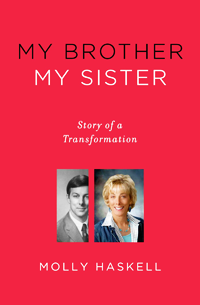
My Brother My Sister: Story of A Transformationby Molly Haskell
Viking. 213 pp.
If you’re fab over fifty—not fab under twenty, like, say, my granddaughters—you will thoroughly identify with film critic and memoirist Molly Haskell as she wrestles with the shock, distress and confusion she experienced when her married, fifty-nine-year-old brother Chevy announced to her—as well as to his wife of many years and their grown children—that he intended to live the rest of his life as a woman. He’d always felt he was in the wrong body, Chevy said, and he intended to get transsexual surgery and despite his age, at last inhabit the right body.
I mention my granddaughters because they shrugged when I told them about Haskell and her brother. “So what?” the nineteen-year old said. “Yeah, what’s the big deal?” the fourteen-year-old said. According to them, and to other young people with whom I’ve discussed the book, there’s nothing particularly startling or amiss about folks changing their sexual identity. They’ve frequently heard or read about people who’ve had transsexual surgery, they’ve even had a few schoolmates who before puberty started receiving the hormone shots that enable the process. But for those of us who are fifty and older, changing one’s sex is a big deal, a bewildering, troubling, inexplicable big deal. To understand the matter, Haskell’s book is essential reading.
In order to explicate the mystery of a person’s denying one sexual identity and choosing another, Haskell examines the theories of psychologists, psychiatrists, and neuroscientists, explores the writings of authors from Shakespeare to Hemingway whose work touches on the matter, and discusses the various personal accounts men and women who have changed their sex have written. In addition, she meticulously reports on the precise nature of the surgeries that seekers after a new sexual identity must endure. But the book is also a gripping personal tale about a sister who must learn to banish the shock, anger, and revulsion she feels when her brother first tells her the news, and find a way to support him in his quest, to love not just the person he was but the person named Ellen he eventually becomes—her sister, a woman who looks very much like Haskell herself.
This thoroughly engrossing book is frank, revelatory, wistful and ultimately extremely wise.
Win one of these fall reads!
To enter comment below by answering the question:
Which of Linda’s picks do you want to read?
1 FOF will win. (See official rules, here.) Contest closes October 31, 2013 at midnight E.S.T. Contest limited to residents of the continental U.S.

0 Responses to “{Giveaway & FOF Book Critic} Fall Reads From Linda Wolfe”
popper10 says:
Thank you so much for offering up a selection of fabulous books. A few weeks ago, I read an excerpt from “A House In the Sky” and found it to be extremely compelling. I would love to read this book in its entirety.
Jessica Bernstein says:
I want to read “Claire of the Light Sea,” because I like novels with fascinating characters, and I like Linda’s comment that “Danticat uses words sparingly, and to great effect.” This sounds like a short but powerful book.
deborahf2 says:
It is a very difficult assignment as each of Linda’s picks have compelling reasons to be read…if I do win “The Signature of All Things”, (my choice) I am keeping her list to get to all of the other titles…thanks to Linda for spotlighting them!
MerryLady says:
All of these books sound rich and engaging and I did also have a hard time deciding which one as well, but I think my pick would be:
The Signature of All Things by Elizabeth Gilbert.